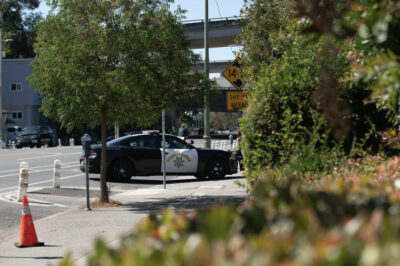Stubborn fat can feel like a never-ending challenge. Despite healthy eating and regular workouts, certain areas just don’t change. For many in busy cities, finding dependable solutions becomes a top priority.
Fat removal procedures have progressed over the years. From traditional liposuction to non-surgical treatments like CoolSculpting, options now cater to different goals and comfort levels.
Each method comes with its advantages and disadvantages.
This blog will guide you through the variety of choices for fat reduction in metropolitan settings. You’ll learn about available options, risks, recovery times, and who qualifies as an ideal candidate.
Wondering which method suits you best? Keep reading to find out!
Types of Fat Removal Procedures
Fat removal methods come in two main forms: surgical and non-surgical. Each offers different benefits, depending on a person’s goals and lifestyle.
Surgical Options: Liposuction
Liposuction is a widely recognized surgical fat reduction method. Surgeons physically remove excess subcutaneous fat using a small tube called a cannula. For individuals considering NYC fat removal surgery, this technique remains a top choice for achieving fast and precise results in a metropolitan setting. The procedure specifically addresses areas like the abdomen, thighs, arms, and back with accuracy.
“Think of it as shaping your body into form,” according to experts in cosmetic surgery techniques. Recovery time differs but typically requires at least one to two weeks before resuming daily activities.
This approach provides fast results for individuals looking for significant body contouring changes in less time than non-surgical options.
Non-Surgical Options: CoolSculpting, SculpSure, and Emsculpt
CoolSculpting freezes fat cells using cryolipolysis. The body naturally eliminates these dead cells over time, reducing specific fat pockets. This treatment addresses areas like the abdomen, thighs, and chin without needles or downtime.
SculpSure uses laser energy to heat and destroy fat cells under the skin. Each session lasts around 25 minutes and can treat multiple areas at once. It’s ideal for those with stubborn fat that doesn’t respond to exercise or diet.
Emsculpt focuses on muscle building while also burning some fat. Using high-intensity electromagnetic therapy, it contracts muscles thousands of times in one session. It’s well-liked for toning abs, arms, buttocks, or thighs efficiently without surgery.
Popular Surgical Fat Removal Techniques
Surgical fat removal offers precise contouring for stubborn areas. These procedures often suit those seeking more dramatic and long-lasting results.
Tumescent Liposuction
Doctors use tumescent liposuction to remove unwanted fat with accuracy. They inject a solution containing saline, lidocaine, and epinephrine into the target area. This mixture numbs the site, reduces bleeding, and simplifies the process of breaking up fat deposits.
Patients usually stay awake during the procedure. The local anesthesia minimizes discomfort while allowing quicker recovery times compared to traditional methods. Many New Yorkers choose this option for body contouring on areas like their stomachs or thighs.
For other advanced techniques, continue reviewing options like Ultrasound-Assisted Liposuction next.
Ultrasound-Assisted Liposuction (UAL)
Tumescent liposuction focuses on infusion-based fat removal. For a more specific approach, specialists often recommend ultrasound-assisted liposuction (UAL). This method uses sound waves to break down fat cells before extraction.
UAL works effectively for fibrous areas like the back or male chest. The technique results in smoother contours and can reduce strain on surrounding tissues. “It’s excellent for refining difficult-to-target areas,” noted one NYC surgeon.
However, it typically requires slightly longer operating times compared to other types of liposuction methods.
Laser-Assisted Liposuction (SmartLipo™)
Laser-assisted liposuction, also called SmartLipo™, uses laser technology to address stubborn fat. The procedure liquefies the fat cells before removal, making them easier to extract.
This method often allows for smaller incisions and reduced bruising compared to traditional techniques.
The heat from the laser encourages skin tightening by stimulating collagen production. Patients with mild sagging in areas like their abdomen or underarms may find this beneficial.
Recovery time is generally shorter than other forms of liposuction, which makes it suitable for busy metropolitan lifestyles.
Power-Assisted Liposuction (PAL)
PAL relies on a vibrating cannula to fragment fat, making its removal simpler. The surgeon uses rapid, small movements to dislodge the fat cells for even extraction. This method decreases physical effort and shortens procedure time.
Doctors often suggest PAL for substantial fat reduction or dense areas like the back. Many patients experience reduced swelling and discomfort compared to traditional liposuction techniques.
It also complements other body contouring procedures such as VASER Liposuction effectively.
VASER Liposuction
VASER Liposuction uses ultrasound technology to break up fat cells before removal. This method targets subcutaneous fat while leaving surrounding tissues unharmed, providing a more careful approach compared to traditional techniques.
The procedure works effectively for shaping areas like the arms, thighs, abdomen, and flanks. It offers greater accuracy in contouring than many other forms of liposuction, which makes it popular for creating refined results in difficult-to-target spots.
Recovery is often quicker due to minimized trauma during the process.
Non-Surgical Fat Removal Methods
You don’t always need surgery to sculpt your body. Modern technologies offer options that freeze, heat, or stimulate fat cells without a single incision.
Cryolipolysis (CoolSculpting)
Cryolipolysis, often referred to as CoolSculpting, focuses on reducing stubborn fat using cold temperatures. The process includes placing an applicator on the skin to freeze fat cells without harming surrounding tissues.
These frozen cells break down and are gradually removed by the body through natural processes.
This non-surgical method is effective for areas such as the abdomen, thighs, or love handles. Patients can typically return to their daily routines immediately after treatment since there’s no recovery time required.
Mild side effects like redness or temporary numbness may occur but usually subside within a few days. CoolSculpting delivers visible results over several weeks as the body naturally removes fat.
Radiofrequency-Based Treatments
Radiofrequency-based treatments address persistent fat while firming the skin. These procedures use low-energy heat to break down subcutaneous fat cells. Over time, the body naturally removes the damaged fat through its metabolic processes.
This method is minimally invasive and aids in body shaping without surgery. Many clients opt for it for smaller areas like the chin or arms. Some sessions take as little as 30 minutes, making them convenient for busy New Yorkers managing packed schedules.
Laser Fat Reduction
Laser fat reduction removes persistent fat pockets using focused laser energy. The heat breaks down subcutaneous fat cells, which your body later removes naturally. This minimally invasive method can shape areas like the abdomen, thighs, and arms with accuracy.
Sessions are quick and usually take less than an hour per treated area. Some patients may experience mild swelling or redness afterward but can return to their daily activities almost immediately.
It offers a quicker recovery option compared to surgical procedures while still achieving visible results over time.
High-Intensity Electromagnetic Therapy
High-intensity electromagnetic therapy targets persistent fat while toning muscles. This noninvasive treatment uses strong electromagnetic waves to stimulate muscle contractions, replicating an intense workout.
Each session typically lasts about 30 minutes and can focus on areas like the abdomen or buttocks.
The process aids in burning subcutaneous fat and improving muscle definition. Many patients observe results after a few sessions with no recovery time needed. For adults in New York City managing hectic schedules, it’s a practical way to improve body sculpting without surgery.
Suitability and Candidate Checklist
Not everyone is the right fit for fat removal procedures, so check if your goals and health align before taking the plunge.
Who is a good candidate for surgical fat removal?
People in good physical health often qualify for surgical fat removal. Candidates should have stubborn fat deposits that do not respond to diet or exercise. These procedures target specific areas, not overall weight loss.
Ideal patients maintain a stable weight and have realistic expectations. Smokers must quit before surgery to lower risks. Those with elastic skin typically see better results after liposuction or other surgical methods.
When to consider non-surgical alternatives
Non-surgical alternatives work well for individuals near their ideal weight who seek minor fat reduction. These treatments are suitable for people with small, localized fat pockets resistant to diet or exercise.
Busy professionals in vibrant cities like New York City often favor these options due to minimal recovery time and lower risks compared to surgery.
Patients with medical conditions that make surgery unsafe can also find advantages in non-invasive methods. CoolSculpting and other energy-based treatments provide gradual improvements without anesthesia or incisions.
Learn more about specific techniques designed for targeted areas next.
Specialized Techniques for Target Areas
Every area of your body deserves a personalized approach—explore techniques designed for persistent fat in specific spots!
Abdomen and Love Handles
Targeting fat around the abdomen and love handles is common in New York City. Liposuction remains a preferred option for removing stubborn fat pockets in these areas. Surgeons use small incisions to suction out subcutaneous fat, creating a more contoured appearance.
CoolSculpting is another popular choice, freezing fat cells through cryolipolysis without invasive surgery. Both methods can address hard-to-lose inches caused by genetics or lifestyle factors.
Emsculpt offers an alternative approach for toning while reducing excess fat simultaneously. Using electromagnetic therapy, this noninvasive treatment builds muscle and burns calories effectively.
Many clients see results within weeks of their session with minimal downtime required afterward. Up next are thighs and buttocks treatments aimed at refining body shape further!
Thighs and Buttocks
Thighs and buttocks are common areas for fat removal in cosmetic surgery. Liposuction can shape these regions by addressing persistent fat deposits that are resistant to diet or exercise.
Techniques like SmartLipo and VASER Liposuction are effective for detailed sculpting while reducing recovery time.
Non-surgical options, such as CoolSculpting or Emsculpt NEO, help tone and reduce fat without incisions. These methods use cold therapy or electromagnetic pulses to break down fat cells efficiently.
Many patients pursue treatment here to enhance the overall balance of their physique with long-term results.
Arms and Chin
Fat removal for the arms targets persistent fat that does not respond to exercise. Liposuction can shape and define this area quickly, creating a toned appearance. Non-surgical options like CoolSculpting freeze fat cells, requiring no incisions or recovery time.
Results vary but often boost confidence in sleeveless clothing.
For the chin, treatments focus on reducing a double chin and refining the jawline. Kybella injections eliminate fat cells permanently using deoxycholic acid. For quicker results, surgeons use liposuction to remove excess fat under the chin.
These procedures enhance facial symmetry without invasive surgeries in many cases.
Risks and Side Effects of Fat Removal Procedures
Every procedure has its pros and cons, and fat removal is no different. Some side effects might catch you off guard if you’re not prepared.
Common side effects (swelling, bruising, temporary numbness)
Swelling often appears in the treated areas after fat removal procedures. It can persist for days or weeks, depending on the type of treatment and your body’s healing pace. Bruising is another common side effect, especially with surgical options like liposuction.
While it diminishes over time, it might persist longer for those prone to noticeable bruising.
Temporary numbness may also occur due to nerve irritation during the procedure. This sensation typically resolves within a few weeks as nerves heal. Applying cold compresses or wearing compression garments can help reduce swelling and discomfort while aiding recovery.
Always inform your provider if symptoms worsen or feel unusual during healing.
Rare complications (infection, contour irregularities)
Infections occasionally occur after fat removal procedures, though they are uncommon with proper care. Symptoms may include redness, warmth, and fever. Prompt treatment with antibiotics can resolve most cases successfully.
Always adhere to hygiene instructions to lower this risk.
Uneven outcomes can occur if fat is removed inconsistently or the skin does not adjust well. This could result in bumps or dimples in treated areas. Experienced providers plan treatments thoroughly to reduce these possibilities, but no method can promise absolute perfection.
Being aware of these risks is helpful when selecting a suitable procedure or provider.
How to Minimize Risks and Ensure Safety
Choose a provider with proven experience and proper credentials. Follow every instruction given before and after the procedure to protect your results.
Choosing a board-certified provider
Look for a provider certified by the American Board of Plastic Surgery. This ensures appropriate training, ethics, and experience in cosmetic surgery.
Confirm their qualifications through official websites. Find someone with significant expertise in fat reduction methods such as liposuction and noninvasive techniques. Steer clear of untrained individuals offering low-cost options or exaggerated promotional statements.
Following pre- and post-procedure instructions
Follow specific pre-procedure instructions to prepare your body for fat removal. Avoid smoking and alcohol for at least two weeks before surgery. These habits can slow healing. Stay hydrated, eat balanced meals, and arrange transportation if sedation will be used.
After the procedure, rest is key. Follow aftercare steps like wearing compression garments for surgical methods or avoiding strenuous activities. Keep incision sites clean if applicable, and watch for any unusual signs like severe swelling or redness.
Detailed care tips vary depending on treatment type; consult your provider directly about recovery timelines.
Leading into understanding costs and financial factors…
Costs and Financial Considerations
Fat removal procedures can vary widely in price depending on the method chosen. It’s worth considering costs against expected results to make an informed decision.
Average costs for surgical and non-surgical options
Liposuction often costs between $4,000 and $7,000 in a metropolitan setting like New York City. Factors such as the surgeon’s experience and the area being treated affect pricing.
Additional charges for the operating room or anesthesia can increase costs.
Non-surgical options like CoolSculpting range from $600 to $1,500 per session. Treatments such as SculpSure or Emsculpt may have similar costs depending on the target area. Multiple sessions are typically needed for the best results, which can accumulate over time compared to one surgical procedure.
Insurance and financing options
Not all fat removal procedures are covered by insurance. Most plans classify them as elective cosmetic surgery. This means you’ll likely pay out of pocket for treatments like liposuction or CoolSculpting.
Many clinics in New York City offer payment options to help with the cost. Monthly payment plans through third-party lenders, such as CareCredit, are common. Some providers may also offer in-house installment arrangements, making procedures more affordable for a variety of budgets.
Always review terms carefully before agreeing to any plan.
Recovery Process and Timeline
Healing takes time and patience, but every step is vital. Stick to the aftercare plan like glue for better results.
Post-operative care for liposuction
Follow all doctor’s instructions to encourage quick recovery after liposuction. Wear compression garments as directed to minimize swelling and help the skin adapt to your new shape.
These should fit snugly but not cut off circulation.
Stay hydrated and eat balanced meals rich in protein to support healing. Avoid intense physical activities for at least two weeks, but walking can improve blood flow and prevent clots.
Watch for unusual symptoms like severe pain or fever, and notify your surgeon immediately if they occur.
Downtime and recovery for non-invasive methods
Non-invasive fat removal methods generally involve minimal downtime. Most individuals can resume work or everyday activities immediately after treatments such as CoolSculpting or laser-based procedures.
Mild redness, swelling, or tenderness may appear but usually subsides within a few hours to days.
Staying hydrated and incorporating light movement can aid in recovery. Intense exercise should be postponed for at least 24-48 hours after the procedure. Results appear progressively over weeks as the body naturally removes treated fat cells.
Tips for a smooth recovery
Stay hydrated to support your body’s healing process. Drinking plenty of water minimizes swelling and helps remove toxins after fat removal procedures. Avoid alcohol, as it may dehydrate you and delay recovery.
Wear compression garments as instructed by your provider. They help decrease swelling, support the treated area, and enhance contouring results. Begin with light activities; walking promotes blood flow, but avoid intense exercise until cleared by your doctor.
Get adequate rest to give your body enough time to fully recover.
Comparing Results: Surgical vs. Non-Surgical Options
Surgical options can deliver dramatic body contouring results. Non-surgical methods offer subtle improvements with less downtime.
Expected outcomes for each method
Liposuction provides significant results in just one session. Patients frequently observe substantial changes in body shape and a reduction in fat deposits. Non-surgical methods, such as CoolSculpting or SculpSure, show progressive improvements over time as the body gradually removes treated fat cells.
Non-invasive treatments are effective for addressing smaller areas but generally require multiple sessions to achieve the best results. On the other hand, surgical options deliver more thorough fat removal and longer-lasting effects when paired with healthy lifestyle choices.
Each approach is suited to specific objectives, whether aiming for subtle adjustments or significant reshaping.
Longevity of results
Surgical fat removal methods, like liposuction, often deliver long-lasting outcomes when paired with a stable lifestyle. Once removed, fat cells typically don’t regenerate in the treated areas.
However, weight gain can cause existing fat cells in other parts of the body to expand.
Non-surgical options such as CoolSculpting and Emsculpt yield gradual changes that may last for months or years. Maintaining results requires regular physical activity and healthy eating habits.
Without upkeep, new fat deposits might form over time.
Myths and Misconceptions About Fat Removal
People often believe fat removal is a universal solution, but that’s not accurate. Many people misinterpret how these procedures truly function and what they can achieve.
Myth: Liposuction helps with weight loss
Liposuction eliminates fat deposits but is not a method for weight loss. This procedure focuses on particular areas, such as the abdomen or thighs, for shaping and defining. It is most suitable for individuals near their ideal body weight who wish to address persistent fat pockets.
The quantity of fat removed during liposuction is restricted for safety purposes. Removing excessive amounts can result in complications like uneven skin or alterations in body shape.
Exploring non-surgical options may be a better choice if the goal is overall slimming rather than targeting specific areas.
Myth: Non-surgical treatments are risk-free
Non-surgical fat removal sounds appealing, but it still carries risks. CoolSculpting may leave temporary swelling, redness, or bruising. Some patients even report nerve pain or uneven results.
Radiofrequency-based treatments can trigger burns if performed incorrectly. Allergic reactions to gels used in procedures are possible too. Choosing a qualified provider in New York City reduces these dangers significantly.
Avoid unlicensed practitioners at all costs!
Myth: Fat removal results are permanent without maintenance
Fat removal procedures target and eliminate fat cells in specific areas. However, the body can still store fat in other regions if you gain weight after treatment. Maintaining a stable weight through diet and exercise helps sustain results long-term.
Overeating or leading an inactive lifestyle after your procedure increases the chance of regaining volume elsewhere. Even with surgical options like liposuction, results will not remain perfect without effort on your part.
Think of it as an investment that needs regular care to retain its worth.
How to Choose the Right Provider in a Metropolitan Setting
Find a skilled provider with top-notch credentials and glowing reviews—your results depend on it.
Importance of researching credentials
Always verify the qualifications of a provider before booking any cosmetic surgery or aesthetic procedure. A board-certified plastic surgeon or dermatologist possesses proper training and expertise in body contouring treatments like liposuction or CoolSculpting.
Certification ensures they meet strict professional standards, reducing risks tied to unqualified practitioners.
Patient reviews provide helpful feedback on previous experiences but don’t stop there. Visit their clinic to assess cleanliness, professionalism, and certifications on display. Every detail is important in selecting someone capable of safe fat removal techniques, whether surgical or minimally invasive options.
Trust your instincts if something feels off during consultations; health should always be a priority over convenience.
Considering patient reviews and testimonials
Checking qualifications is essential, but firsthand experiences often carry more weight. Patient reviews and testimonials demonstrate the provider’s track record in real-world conditions.
These insights emphasize everything from bedside manner to the actual results of fat reduction procedures.
Look for patterns in feedback rather than focusing on one or two extremes. Consistent praise for communication skills or recovery support says a lot about care quality. Similarly, repeated complaints can serve as warnings you shouldn’t ignore.
Choose a provider known for both safety and satisfaction to feel confident moving forward with your procedure.
FAQs About Fat Removal Procedures
Got questions about fat removal? Let’s clear the air and get straight to the facts—read on for answers!
How much fat can be removed safely?
For liposuction, most surgeons recommend removing no more than 5 liters of fat in a single session. This amount minimizes risks like fluid imbalance or excessive blood loss. For smaller procedures or non-surgical treatments like CoolSculpting, the fat reduction is more gradual and focuses on specific areas instead of large volumes.
Removing larger amounts of fat can be unsafe and may lead to complications. Surgeons prioritize safety while aiming for natural-looking results in body contouring procedures. Discuss your goals with a board-certified provider to determine the most suitable approach for your case.
Do results look natural?
Results from fat removal procedures can look natural when performed by an experienced provider. Surgical options like liposuction offer precise contouring, allowing the body to maintain its shape while removing excess fat.
Non-surgical methods, such as CoolSculpting or SculpSure, rely on gradual fat reduction for a more subtle outcome over weeks or months.
The skill of the doctor plays a major role in achieving balanced results. Techniques customized to individual body types help avoid uneven contours or unnatural appearances. Following post-procedure care instructions also contributes to maintaining smooth and consistent outcomes.
Can fat come back after removal?
Natural-looking results are a priority in fat removal, but maintaining them requires effort. Fat cells removed during liposuction or non-surgical treatments do not regenerate. However, the remaining fat cells can expand if you gain weight afterward.
Lifestyle changes play a critical role in preserving outcomes. Eating balanced meals and staying physically active help control your weight. Without these habits, new areas of the body may store excess fat over time.
Conclusion
Fat removal options in a city offer flexibility for many lifestyles. Surgical and non-surgical methods cater to different needs. Each approach comes with its own benefits, risks, and recovery times.
Consulting trusted providers helps avoid unnecessary complications. Research is key when deciding what matches your goals. Take control of your journey toward body confidence today!






